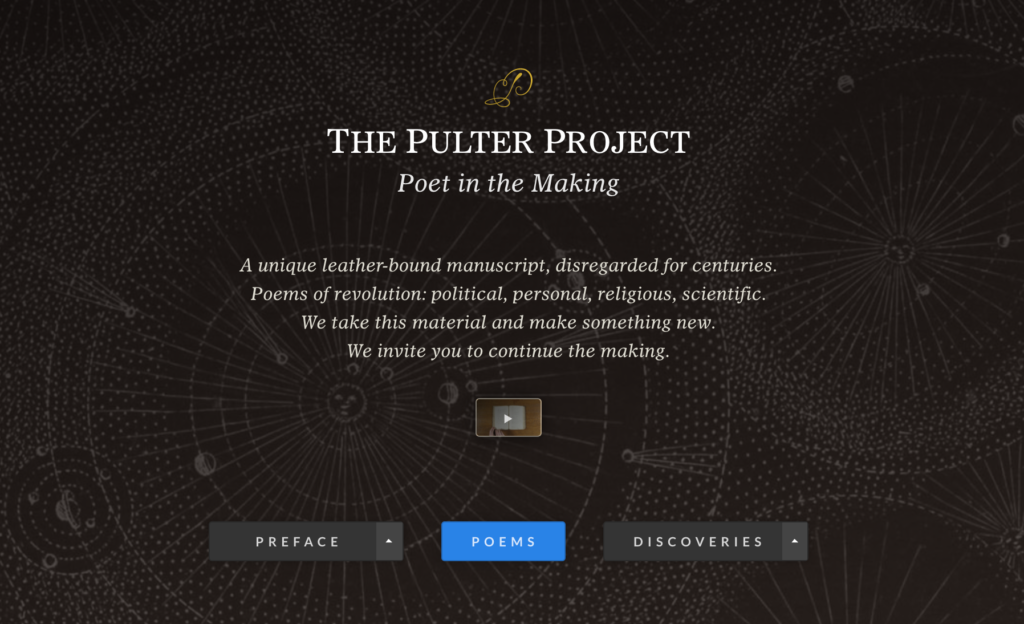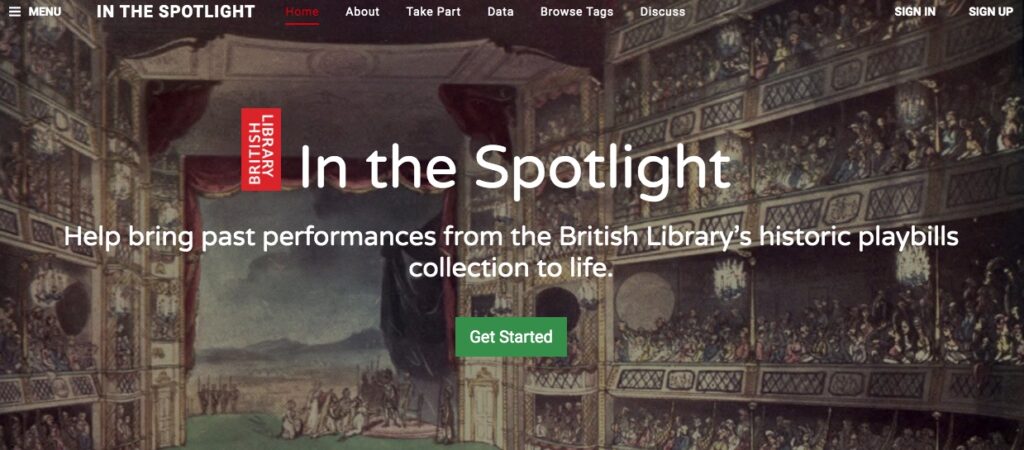
Overview
17th century poet Hester Pulter’s manuscript of 120 poems on topics ranging from politics, mythology, royalism, war and death, and an unfinished romance was stored and unread for over 250 years at the Brotherton Library, University of Leeds, UK. In 1996, graduate student Mark Robson, rediscovered the manuscript while working in the library. Subsequently, two scholars of early modern literature, Wendy Wall (Northwestern University) and Leah Knight (Brock University), along with an international team of collaborators, embarked on the Pulter Project to:
- Make Pulter’s poetry public by adding her work to the canon
- Create an ongoing, collaborative process by which audiences can see the making of Pulter as a poet and writer using multiple editorial voices in a digital landscape
Audiences
The Pulter Project is unique in that it uses technology and scholarship to explicitly pursue multiple audiences simultaneously. The website presents each Pulter poem with multiple views:
- The “Elemental Edition” is intended for general readers of all levels who want to read the poems. The editors have added punctuation and minimal scholarly annotations and notes to create a basic springboard to further work on Pulter’s poetry.
- The “Amplified Edition” is accompanied by more extensive editorial notes by experts for more advanced scholars.
One can view both editions side-by-side in a comparison view. Concurrently, one can view the original manuscript page and companion readings for the poems in poetry, literature and science, religion, literature, and women’s writing in sections titled “Curations” and “Explorations”.
Creators
The Pulter Project founders Wall and Knight had access to the original manuscript and conducted a workshop to explore different ways of editing, contextualizing, anthologizing, and digitizing Pulter’s poems. They collaborated and partnered with Northwestern University, Northwestern’s Media and Design Studio, and Brotherton Library at the University of Leeds, as well as established a digital team, and an editorial board of scholars in early modern writing, manuscript studies, poetry, early modern science, politics, poetry, and gender studies. Wall and Knight photographed the original manuscript and transcribed the poems to create the “Elemental Editions”. A uniform set of editorial principles and style guidelines were established to aid in the “Amplified Editions”.
Technologies
The project was created using a customized model of the Versioning Machine (VM) software from the University of Maryland which allows the project to present multiple—sometimes very different—versions of the same poem side-by-side. VM requires the XML coding language (human and machine-readable), so all of the poems are encoded according to the P5 Guidelines of the Text Encoding Initiative (TEI). High-resolution images provided by the Brotherton Library are zoom-able. The website’s introductory page features animation and a professional “teaser” video. Another video on the “About the Project” page is longer but filmed in a similar format, featuring animations of period engravings, footage of the manuscript object and interviews with the project founders.
Conclusion
The Pulter Project is an innovative use of technology for an archival project which future projects can be inspired by. The first short animation and teaser video presented at the outset are mysterious and intriguing and invite the user to explore the website further. The video does a great job of showing the manuscript as an object that has survived centuries, an aged and imperfect historical object. The two “Editions” associated with each poem attract different audiences and allow multiple access points to Pulter’s poems. Interactive elements such as hovering over a word to get its definition, and the ability to have comparison views open and draggable to alternate positions makes the user feel like they are in control of the website and how the information is perceived. The additional scholarship found in “Curations” and “Explorations” is a wonderful opportunity to explore themes further. Another feature that makes this project unique among archival projects is that the user can see the collaborative process and editorial decisions involved in making verse accessible, a process which is often invisible.



